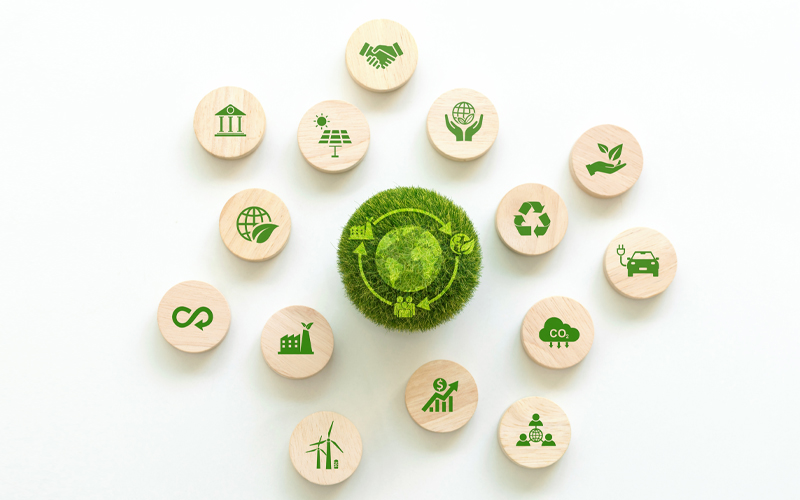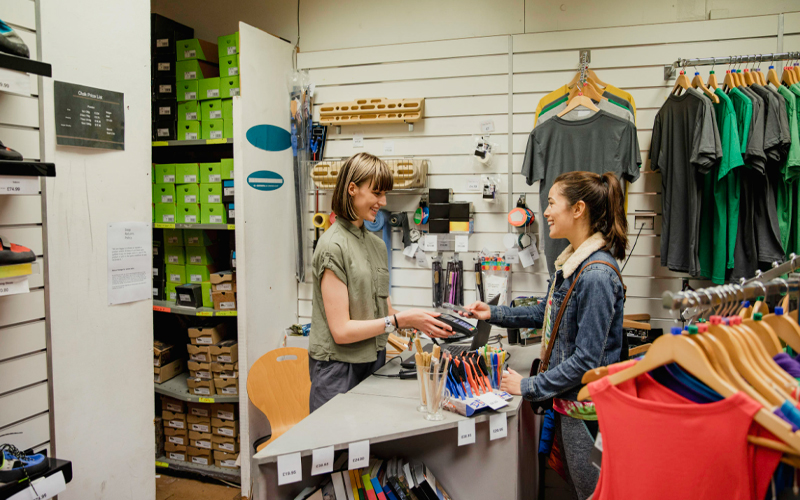The e-commerce industry experienced a fillip during the pandemic. And, this trend continues in the post-pandemic era as shoppers are now used to the benefits of online shopping. Data reveals that “in 2023, 2.64 billion consumers will complete at least one purchase online.”
Some factors that have propelled the surge in the number of online customers are the widespread adoption of smartphones, accessibility to global suppliers, digital payments, millennial consumers, ease and convenience of online shopping, etc.
It comes as no surprise that businesses are shifting from brick-and-mortar stores to e-commerce stores. And, “the number of e-commerce websites across the globe is 26 million.”
Hence, businesses need to do some brainstorming to develop strategies to lure buyers to their stores in a highly competitive marketplace!
Before developing any strategy, it is essential to understand what the customer wants.
Today’s customer expects a personalised experience. They like businesses that know them by name, offer products based on their preferences, provide a seamless checkout experience, and deliver products according to their preferred mode.
Buyers are no longer impressed by products alone, it is the shopping experience that matters too. So if there are two stores where one offers a great product and poor experience while the other offers a poor product and a great experience, the latter is likely to be the winner.
Simply put, it is not engagement but experience that drives sales. Therefore, e-commerce stores need to develop strategies that offer a great experience.
How to provide a great shopping experience?
This is where technology can play a vital role!
E-commerce businesses need to look at the latest technologies to streamline their sales strategies.
Some of the technologies that come to the forefront include:
Big Data: Data has grown in volume and type, it is being generated at a fast pace. Businesses can leverage big data to understand their customers by recognising their behaviour patterns. Big data enables predictions of future trends and thus facilitates the customisation of shopping experiences for customers.
Artificial Intelligence (AI): The availability of data is not enough. Data needs to be harnessed effectively to develop marketing strategies. This is where AI steps in. AI can gather both structured and unstructured data and analyse it to provide valuable insights to build personalised customer experiences.
Machine Learning (ML): ML, which is a subset of AI, has a vital role to play in creating customised shopping experiences. ML is a self-learning technology that can be trained on existing datasets. The algorithms predict future scenarios based on their learning. These predictions help marketers to hyper-personalise the shopping experience for buyers.
Augmented Reality (AR): In recent years, AR has emerged as a revolutionary technology that is transforming the e-commerce landscape. Augmented reality is a technology that offers an immersive experience to consumers. This technology can help them visualise products from the comfort of their homes. It provides a deeper understanding of products. AR can be a game-changer when it comes to the online shopping experience. This is because the only thing that e-commerce stores lack is the ability to provide the touch and feel of the product that brick-and-mortar stores do. And, AR plugs this gap by offering buyers a virtual experience of the product.
Technology streamlines different strategies adopted by e-commerce businesses to boost customer experience.
Some strategies deployed by e-commerce businesses are:
Drone delivery: Once e-commerce stores started doorstep delivery of products, customers wanted more! They wanted deliveries in the shortest time, or at least same-day deliveries. E-commerce retailers obliged. Same-day and super-quick deliveries are now the norm in quite a few urban areas. However, Amazon went a step ahead and tested drone deliveries too. It is expected that drone delivery will become more mainstream in times to come.
Social Commerce: It is a strategy that enables buyers to shop directly through social media platforms. Social media channels not only advertise products according to the buyers’ preferences but also offer seamless checkouts through the channel.
Voice Search: Voice searches enable customers to order products through their smart speakers. Voice-enabled buttons provide an enriched customer experience.
Chatbots: AI-powered chatbots are incredibly effective in boosting customer experience. More e-commerce businesses use chatbots. Market research data indicates that with the current use of neural networks and chatbots getting smarter and cheaper, their usage will reach 1.25 billion by 2025.
In conclusion
Innovation and technology are the way ahead for boosting buyer experience in the digital domain. E-commerce stores must explore technologies aligned with their business model and deploy them for better outcomes. While technologies like AI, ML, etc. have already made inroads, technologies like blockchain and AR hold promise for e-commerce stores to delight their customers.
*For organizations on the digital transformation journey, agility is key in responding to a rapidly changing technology and business landscape. Now more than ever, it is crucial to deliver and exceed on organizational expectations with a robust digital mindset backed by innovation. Enabling businesses to sense, learn, respond, and evolve like a living organism, will be imperative for business excellence going forward. A comprehensive, yet modular suite of services is doing exactly that. Equipping organizations with intuitive decision-making automatically at scale, actionable insights based on real-time solutions, anytime/anywhere experience, and in-depth data visibility across functions leading to hyper-productivity, Live Enterprise is building connected organizations that are innovating collaboratively for the future.








